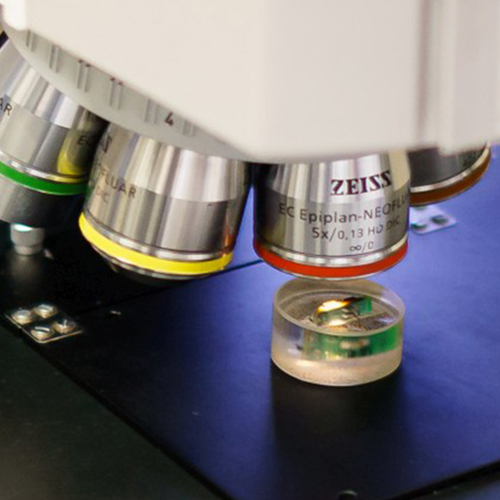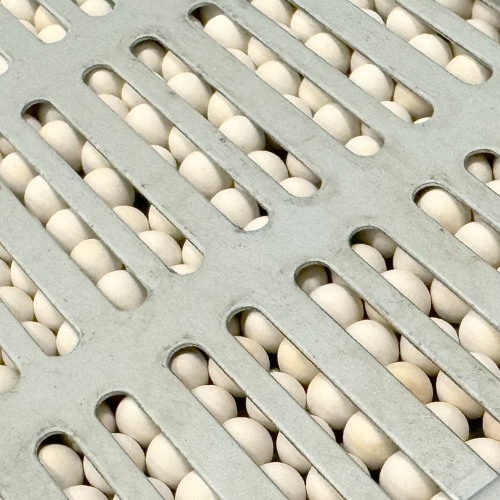20 February 2024
Thermally Managing Intermetallics
The storage of moisture sensitive (electronic) components and materials are problematic.
Manufacturers with Long term Storage Requirements face additional obstacles.
Due to rapid changes in packaging design, material and a very high demand for electronic components (consequently a shortage of semiconductors in all industries), companies find themselves forced to purchase additional quantities of components in order to guard against the impact of component obsolescence on their final product designs. This in turn creates an issue of long term inventory storage.
Product lifecycles have become very short with new models being released sooner than ever before. However, many manufacturers in industries including automobiles, aviation and avionics, military and railway must guarantee the availability of replacement parts including PCBs for ten or even twenty years. This demands the advance purchase and extended storage of components and materials. Further complicating the problem is that most components cannot be stored for more than a few years without very special handling procedures.
After long-term storage, components and circuit boards are often no longer solderable, due to oxidation caused by the oxygen of the air (oxidant) and the humidity (electrolyte). However, if the humidity, which forms an invisible water film of few atomic layers on the surfaces, is lowered below 5% RH, this corrosion process is stopped. At the same time, other negative effects due to moisture absorption are also avoided.
Intermetallic compounds form when two unlike metals diffuse into one another creating species materials which are combinations of the two materials. Intermetallic growth is the result of the diffusion of one material into another via crystal vacancies made available by defects, contamination, impurities, grain boundaries and mechanical stress. There are a number of locations within the electronic package where these dissimilar metals are joined. These include die level interconnects and wire bonds, plating finishes on lead frames, solder joints, flip chip interconnects, etc. Growth of intermetallics during the storage period can occur and reduce the strength.
Intermetallic growth rate is strongly temperature-dependent and doubles for each 10°C temperature increase.
This aging process can be slowed by appropriate cooling. However, the risk of whisker formation of tin alloys increases with decreasing temperature. Studies and practice have shown that a storage temperature of 12°C is optimal.
The XSDC-1402-52 cabinet from Totech Europe will help you avoid risks as mentioned above.
Find out more about the XSDC long term storage Dry Cabinets.
Read more
9 February 2024
SMTconnect 2024
This year Totech Europe will be present again at the SMT connect. Find us at booth 4A-345.
Together with the ASYS Group we like to inspired you how to automate, Digitalize & Connect your entire shop floor.
Storage Solutions you can count on!
From Dry Cabinets and Walk-In Dry Rooms to fully Automated Component Warehouse Management, our extensive product portfolio offers the industry’s greatest array of storage choices, all driven by Smart Storage Manager software. And for outsourced storage, our ‘Long Term Storage Solutions’, delivers vital long-term component storage and a comprehensive suite of interim testing disciplines.
Please ask our sales team about our new developments like the Dry Module and the Dry Lift.
Save the date
Let us know if we can welkcome you at our booth?
This year Totech Europe will be present again at the SMT connect. Find us at booth 4A-345.
Together with the ASYS Group we like to inspired you how to automate, Digitalize & Connect your entire shop floor.
Storage Solutions you can count on!
From Dry Cabinets and Walk-In Dry Rooms to fully Automated Component Warehouse Management, our extensive product portfolio offers the industry’s greatest array of storage choices, all driven by Smart Storage Manager software. And for outsourced storage, our ‘Long Term Storage Solutions’, delivers vital long-term component storage and a comprehensive suite of interim testing disciplines.
Please ask our sales team about our new developments like the Dry Module and the Dry Lift.
This year Totech Europe will be present again at the SMT connect. Find us at booth 4A-345.
Together with the ASYS Group we like to inspired you how to automate, Digitalize & Connect your entire shop floor.
From Dry Cabinets and Walk-In Dry Rooms to fully Automated Component Warehouse Management, our extensive product portfolio offers the industry’s greatest array of storage choices, all driven by Smart Storage Manager software. And for outsourced storage, our ‘Long Term Storage Solutions’, delivers vital long-term component storage and a comprehensive suite of interim testing disciplines.
Please ask our sales team about our new developments like the Dry Module and the Dry Lift.
Let us know if we can welkcome you at our booth?
Read more
16 January 2024
IPC APEX EXPO 2024
This year Totech will be present again at APEX Expo. Find us at booth #3828 to learn about our extensive product portfolio of the industry’s greatest array of Dry Storage choices, all driven by Smart Storage Manager software. With our comprehensive understanding of IPC J-STD 033D on moisture management, you can ensure that your components are savely stored using Dry Storage Solutions from Totech. In addition to SuperDry Storage Cabinets, we will be displaying our XSDB Fast Drying Cabinet series with Feeder Storage, Pick By Light, SMT reel racks and many other options. This will change the way your organization handles Floor Life Resetting of PCB and
components.
Storage Solutions you can count on!
Let us know if we can welcome you at our booth #3828. Fill out the contact form bij pressing the button below and and we’ll keep you posted on the show.
This year Totech will be present again at APEX Expo. Find us at booth #3828 to learn about our extensive product portfolio of the industry’s greatest array of Dry Storage choices, all driven by Smart Storage Manager software. With our comprehensive understanding of IPC J-STD 033D on moisture management, you can ensure that your components are savely stored using Dry Storage Solutions from Totech. In addition to SuperDry Storage Cabinets, we will be displaying our XSDB Fast Drying Cabinet series with Feeder Storage, Pick By Light, SMT reel racks and many other options. This will change the way your organization handles Floor Life Resetting of PCB and
components.
Storage Solutions you can count on!
This year Totech will be present again at APEX Expo. Find us at booth #3828 to learn about our extensive product portfolio of the industry’s greatest array of Dry Storage choices, all driven by Smart Storage Manager software. With our comprehensive understanding of IPC J-STD 033D on moisture management, you can ensure that your components are savely stored using Dry Storage Solutions from Totech. In addition to SuperDry Storage Cabinets, we will be displaying our XSDB Fast Drying Cabinet series with Feeder Storage, Pick By Light, SMT reel racks and many other options. This will change the way your organization handles Floor Life Resetting of PCB and
components.
Let us know if we can welcome you at our booth #3828. Fill out the contact form bij pressing the button below and and we’ll keep you posted on the show.
Read more
15 January 2024
Zeolite Technology
People refer to Desiccant Cabinets, and Dry Cabinets, and Desiccant Dry Boxes…but not everyone is familiar with the actual desiccant technology that we employ. Unlike clay or silica, we use a crystal known as Zeolite. It is a molecular sieve — that is to say, the size and shape of its structural openings are that of H2O molecules. And those water molecules are literally sifted from the air inside the cabinet. The desiccant is never touched by operators, and it never needs replacing.
Read on for our more technical explanation:
Zeolite molecular sieves are crystalline, highly porous materials, which belong to the class of alumino silicates.
These crystals are characterized by a three-dimensional pore system, with pores of precisely defined diameter. This diameter is in the dimension of the size of molecules such as water, CO2 and H2S. The pores can be adjusted to precisely determined uniform openings allowing for molecules smaller than its pore diameter to be adsorbed whilst excluding larger molecules, hence the name “molecular sieve”. The different pore sizes of synthetic zeolites open up a wide range of possibilities in terms of “sieving” molecules of different size or shape from gases and liquids.
Zeolite molecular sieves are purely synthetic materials and are characterized by the following properties:
–Selective adsorption due to the uniform pore size of the zeolite structure.
–High adsorption capacity for polar substances at low concentrations
Molecular sieves are manufactured by crystallisation from aluminium hydroxide, sodium hydroxide and waterglass. Under carefully controlled conditions, the crystallisation process produces the required sodium alumino silicate structure. The formed zeolite crystals can then be ion exchanged to adjust the pore size. After drying, the molecular sieve crystals can either be processed to activated zeolite powder or a quantity of binder is added, forming the material into beads. These beads are dried, calcined and finally screened to the required particle size prior to packaging.
Zeolite Structure
In addition, the pore size plays a significant role, allowing or prohibiting the entrance of molecules to the pore system.
Selective Adsorption of Water and other Polar Substances
The up-take of water or other materials in zeolites is called adsorption and functions on the basis of physisorption. The main driving force for adsorption is the highly polar surface within the pores. This unique characteristic distinguishes zeolites from other commercially available adsorbents, enabling an extremely high adsorption capacity for water and other polar components even at very low concentrations.
The adsorption on molecular sieves is therefore dependent on the following physical molecular properties:
Size and Shape: Molecules larger than the pore opening of the molecular sieve cannot be adsorbed, smaller molecules can.
Molecular Polarity: Molecules with large polarity or polarisability can be adsorbed preferentially under identical conditions
Of note is the high capacity of the Zeolite used by Totech even at low water concentration, allowing to dry to very low water contents. The molecular sieve can also retain its high capacity at high temperature, which makes it the optimal material if drying needs to be carried out at elevated temperatures.
The adsorption process is fully reversible and of purely physical nature. The structure of the zeolite stays intact during the adsorption process (and its later regeneration), and dissolution effects like with other drying agents like calcium compounds cannot happen.
How do Super Dry Dynamic Dry Units work?
Our dynamic high performance drying unit U-5002, can achieve air moisture levels of under 0.3% RH, even at temperatures of 60°C. Unlike traditional technology, during cabinet door openings, air moisture levels barely rise above 5% and sink within a few minutes again to
The desiccant is refreshed by heating and allows the trapped moisture to escape as vapor (H2O) through vents located at the back of the cabinet. Once refreshed the unit is ready to seal off the exterior venting, and re-open itself to the interior to continue dehumidification. Through a microprocessor the state of the drying substance is permanently monitored and compared with the input set point values. Only when the moisture content in the cabinet exceeds the absorption capacity of the drying substance, is the thermal regeneration started. The strength of this process in turn is fitted individually to the desired set point moisture in the cabinet. This has led to a drastic reduction of energy demand in cabinets which are infrequently opened. Often a regeneration of only 8 minutes suffices many weeks of component drying. In manufacturing environments, the regeneration behavior of the drying unit adapts itself dynamically to the needs of short opening cycles of the doors and frequent access.
Through this, the availability and efficiency is improved considerably in comparison to traditional fixed regeneration cycles.
Read more



